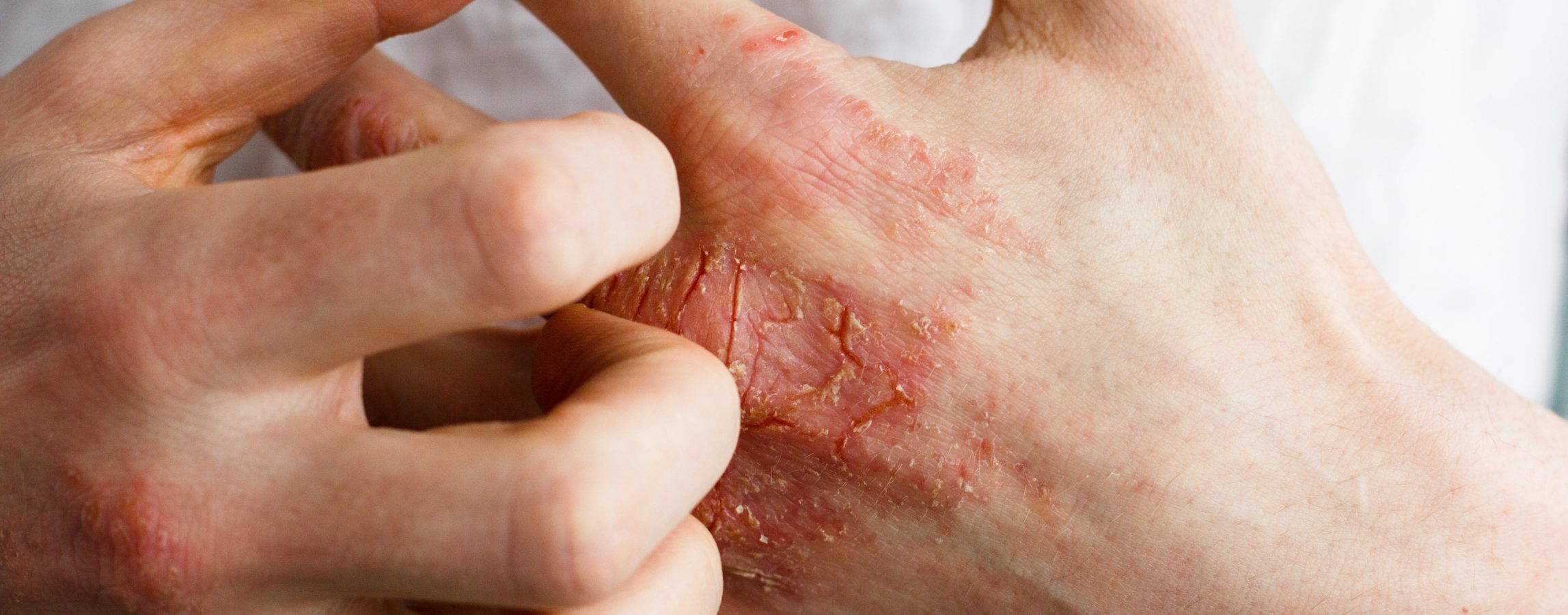Eczema, or dermatitis, is a hereditary condition that is characterized by an itchy, scaly skin rash. It can affect people of all races, genders, and ages. It is not contagious. Eczema can be extremely uncomfortable as well as unsightly, but at Glendale Dermatology, we have some very effective methods for alleviating your symptoms.
What Is Eczema?
Eczema is a general term used to describe an inflammation of the skin. In fact, it is not a single disease, but a series of chronic skin conditions that produce itchy rashes, scaly, dry and leathery areas, skin redness, and inflammation. It can be located anywhere on the body, but most frequently appears in the creases on the face, arms, and legs. Itchiness is the key characteristic and symptom of eczema. When scratched, the lesions may begin to ooze and get crusted. Over time, painful cracks in the scaly, leathery tissue can form.
What Causes Eczema?
The cause of this condition remains unknown, but it usually has physical, environmental, or lifestyle triggers. Coming into contact with a trigger, such as wind or an allergy-producing fabric, launches the rash and inflammation. Although it is possible to get eczema only once, the majority of cases are chronic and are characterized by intermittent flare-ups throughout a person’s life. In some patients patch testing to a range of the most common allergens can be done to determine whether eliminating exposure them may prevent recurrences of outbreaks.
Different Types of Eczema
There are a variety of types of eczema, depending upon the nature of the trigger and the location of the rash. While they all share some common symptoms, like itchiness, there are differences. The following are some of the most common types:
- Atopic Dermatitis -The most frequent form, atopic dermatitis is thought to be caused by abnormal functioning of the body’s immune system and is characterized by itchy, inflamed skin. Atopic dermatitis tends to run in families. About two-thirds of the people who develop this form of eczema do so before the age of one. Atopic dermatitis generally flares up and recedes intermittently throughout the patient’s life.
- Contact Dermatitis – Contact dermatitis is caused when the skin comes into contact with an allergy-producing agent or an irritant, such as chemicals. Finding the triggering allergen is important to treatment and prevention. Allergens can be things like laundry detergent, cosmetics, jewelry, fabrics, perfume, diapers, and poison ivy or sumac.
- Dyshidrotic Dermatitis – This type strikes the palms of the hands and soles of the feet. It produces clear, deep blisters that itch and burn. Dyshidrotic dermatitis occurs most frequently during the summer months and in warm climates.
- Neurodermatitis – Also known as Lichen Simplex Chronicus, this is a chronic skin inflammation caused by a continuous cycle of scratching and itching in response to a localized itch, like a mosquito bite. It creates scaly patches of skin, most commonly on the head, lower legs, wrists, or forearms. Over time, the skin may become thickened and leathery.
- Nummular Dermatitis – This form appears as round patches of irritated skin that may be crusted, scaly, and extremely itchy. Nummular dermatitis most frequently appears on the arms, back, buttocks, and lower legs, and is usually a chronic condition.
- Seborrheic Dermatitis – Seborrheic dermatitis is a common condition that causes yellowish, oily, and scaly patches on the scalp, face, or other body parts. Dandruff, in adults, and cradle cap, in infants, are both forms of seborrheic dermatitis. Unlike other types of eczema, seborrheic dermatitis does not necessarily itch. It tends to run in families. Known triggers include weather, oily skin, emotional stress, and infrequent shampooing.
- Stasis Dermatitis – Also known as varicose eczema, this skin irritation appears on the lower legs of middle-aged and elderly people. It is related to circulation and vein problems. Symptoms include itching and reddish-brown discoloration of the skin on one or both legs. As the condition progresses, it can lead to blistering, oozing, and skin lesions.
How to Treat Eczema in Queens
For mild cases, over-the-counter topical creams and antihistamines can relieve the itching. In persistent cases, we will likely prescribe stronger medicine, such as steroid creams, oral steroids (corticosteroids), antibiotic pills, or possibly an injectable medication called Dupixent.
The best form of prevention is to identify and remove the trigger. You should also use mild cleansers and keep your skin well moisturized at all times. Also avoid scratching the rash (which can lead to infection) and situations that make you sweat, such as strenuous exercise.
At your skin consultation, Dr. Brezel will examine your skin and possibly do a patch test to determine the type of eczema you have, if your condition is indeed eczema. He will then prescribe the treatment that shows the most efficacy for your particular situation.
Visit Glendale Dermatology for Eczema Treatment in New York
Dr. Brezel is a board-certified dermatologist with decades of experience treating skin conditions in Glendale and the greater Queens and NY community. He is a knowledgeable, compassionate doctor who will prioritize providing you with the greatest relief possible for your condition. To schedule your consultation, fill out, and submit the form below.

